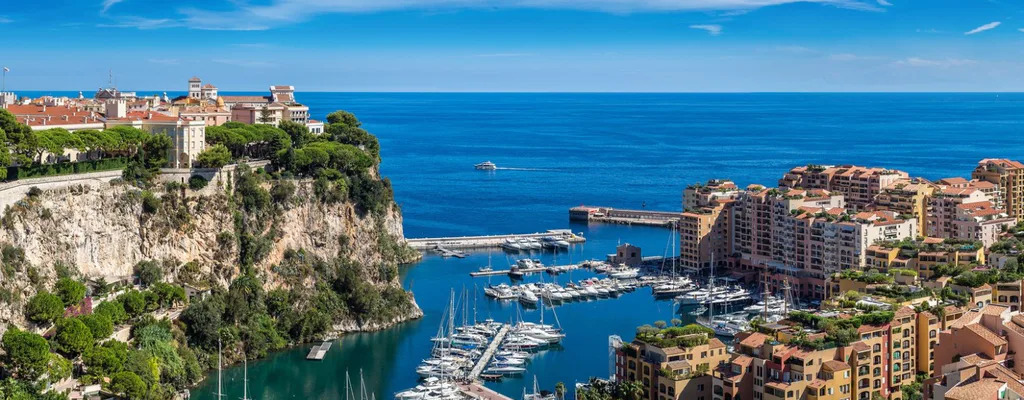IN MOSCOW THE ROMANOVS AND THE GRIMALDIS. THREE CENTURIES OF HISTORY – XVII-XX
by Erika Cannoletta
MOSCOW. Prince Albert II of Monaco has paid a visit to Russia in October to mark the tenth anniversary of renewed diplomatic relations between the two countries. He assisted the inauguration of an important exhibition held at the new State Tretyakov Gallery at 10, Lavrushinsky Lane – halls 49-54 that you can visit until November 13 2016. The exhibition is organized in collaboration with the Federal Archives Agency of Russia, the State Archive of the Russian Federation, the Grimaldi Forum, the New National Museum of Monaco. The aim of the project is to tell the public about the history of relations between the two dynasties. In the halls of the gallery are presented the archive documents of Russia and Monaco, specific prints, paintings and sculptural portraits. Among the items is the 1895 Fabergé Blue Serpent Clock Egg that was gifted to Tsarina Maria Feodorovna.
The Blue Serpent Egg entered the Royal Family of Monaco in 1974 and soon became a favorite of Princess Grace. After her death in 1981, Prince Rainer sealed her suite, preserving the room as a memorial and keeping the Blue Serpent Egg from public view. The Blue Serpent Clock Egg is a Tsar Imperial Fabergé egg ,one of a series of fifty-two jeweled eggs made under the supervision of Peter Carl Fabergé for the Russian Imperial Family. They are the following: Hen – Hen with Sapphire Pendant – Third – Cherub with Chariot – Nécessaire – Danish Palaces – Memory of Azov – Diamond Trellis – Caucasus – Renaissance -Rosebud – Blue Serpent Clock – Twelve Monograms – Rock Crystal – Alexander III Portraits – Imperial Coronation – Mauve – Lilies-of-the-Valley – Pelican – Bouquet of Lilies Clock – Pansy -Trans-Siberian Railway – Cockerel – Basket of Wild Flowers – Gatchina Palace – Clover Leaf – Empire Nephrite – Peter the Great – Royal Danish – Moscow Kremlin – Swan – Rose Trellis – Cradle with Garlands – Alexander Palace – Peacock – Standart Yacht – Alexander III Commemorative – Colonnade – Alexander III Equestrian – Fifteenth Anniversary – Bay Tree – Tsarevich – Napoleonic – Romanov Tercentenary – Winter – Mosaic – Catherine the Great – Red Cross with Triptych – Red Cross with Imperial Portraits – Steel Military – Order of St. George – Karelian Birch – Constellation (unfinished). The Blue Serpent Clock features a clock, and is a design that Fabergé copied for the Duchess of Marlborough Egg in 1902. Most Fabergé scholarship published prior to 2008 assigned the egg’s creation to 1887, although with some notable reservations due to inconsistencies between the Blue Serpent Clock Egg and contemporary descriptions of the 1887 egg. The 2012 rediscovery of the 1887 Third Imperial Egg, announced to the world in March 2014, validates the theory that the Blue Serpent Clock was crafted and delivered in 1895 to the then Tsar of Russia, Nicholas II. The crafting of this imperial egg is credited to Mikhail Perkhin of Fabergé’s shop. The egg stands on a base of gold that is painted in opalescent white enamel. The three panels of the base feature motifs of raised gold in four colors, representing the arts and sciences. A serpent, set with diamonds, coils around the stand connecting the base to the egg and up toward the center of the egg. The serpent’s head and tongue point to the hour which is indicated in Roman numerals on a white band which runs around the egg near the top. This band rotates within the egg to indicate the time, rather than the serpent rotating around the egg. This is the first of the Tsar Imperial Fabergé eggs to feature a working clock. The majority of the egg is enameled in translucent blue and has diamond-studded gold bands and designs ringing the top and bottom of the egg. On each side of the egg a sculpted gold handle arches up in a “C” shape, attached to the egg on the top near the apex and on the lower half of the egg, near the center. Since this egg is a working clock, it contains no surprise. It is not known when or how the Tsar ordered the Easter egg from Fabergé, but the Blue Serpent Clock Egg was presented to Maria Feodorovna by Tsar Nicholas II on Easter day, 1895. The egg was housed in the Anichkov Palace until the 1917 revolution. Along with the other Fabergé eggs in the palace, the Serpent Clock Egg was transferred to the Armory Palace of the Kremlin in mid September 1917.


Confiscated Treasures with an Enlargement of the Pelican Egg with Stand In 1922 the egg was likely transferred to the Sovnarkom where it was held until it was sold abroad to Michel Norman of the Australian Pearl Company. Between 1922 and 1950 the egg was bought by Emanuel Snowman of Wartski, sold, and bought back by Wartski. It is currently owned by Prince Albert II, and is held in Monaco.






